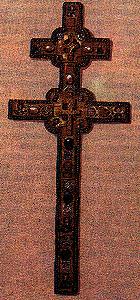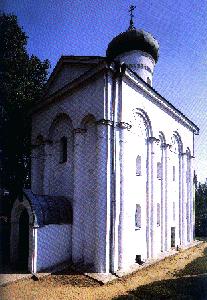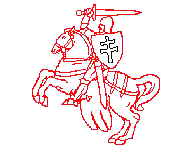 The cross of Saint Efrasinnia
The cross of Saint Efrasinnia
 The Holy
Saviour Church
The Holy
Saviour Church
For the preparation of this Page I have used the article after Alexander Nadson "Come, Saint Euphrosyne, and stand up for us!" taken from the newspaper "Belarus News" 12, 1995 and the book of Jan Zaprudnik "Belarus at the Crossroads in History".
 |
Maintaining this page is Aliaksiej SierkaGo to Belarusan Heritage
|

|